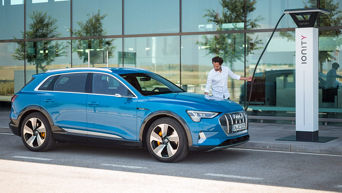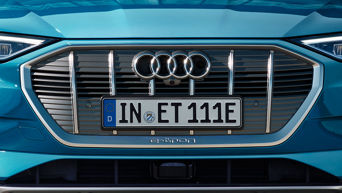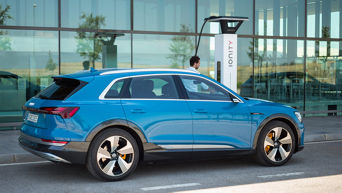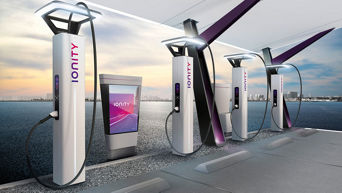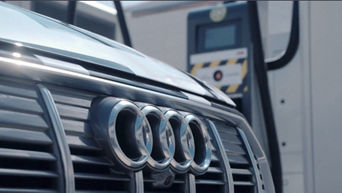The Audi Charging Service¹ offers you uniform access to one of the largest public charging networks across Ireland and Europe. Public charging points in new countries are constantly being added, with e-Roaming, cross-border charging with a single contract is possible in currently 27 countries. Uniform and transparent subscriptions make it easy and worry-free to switch to electric mobility.
All public charging processes and invoices can be viewed easily and clearly via the myAudi portal and the myAudi app².
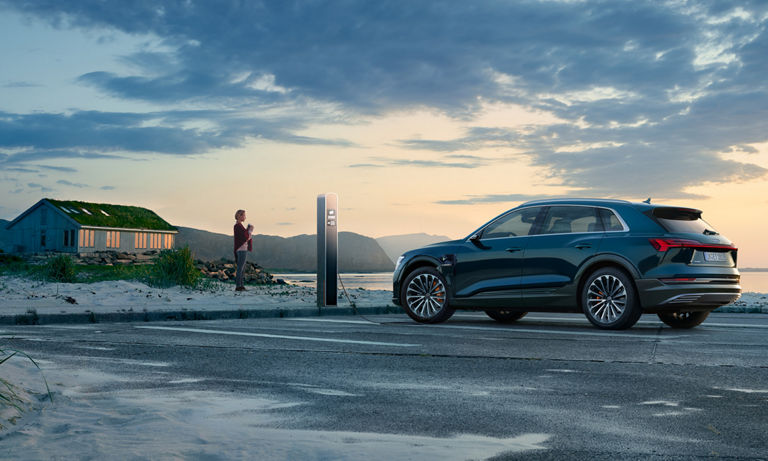
e-tron in everyday life.
Public charging
The Audi Charging Service¹
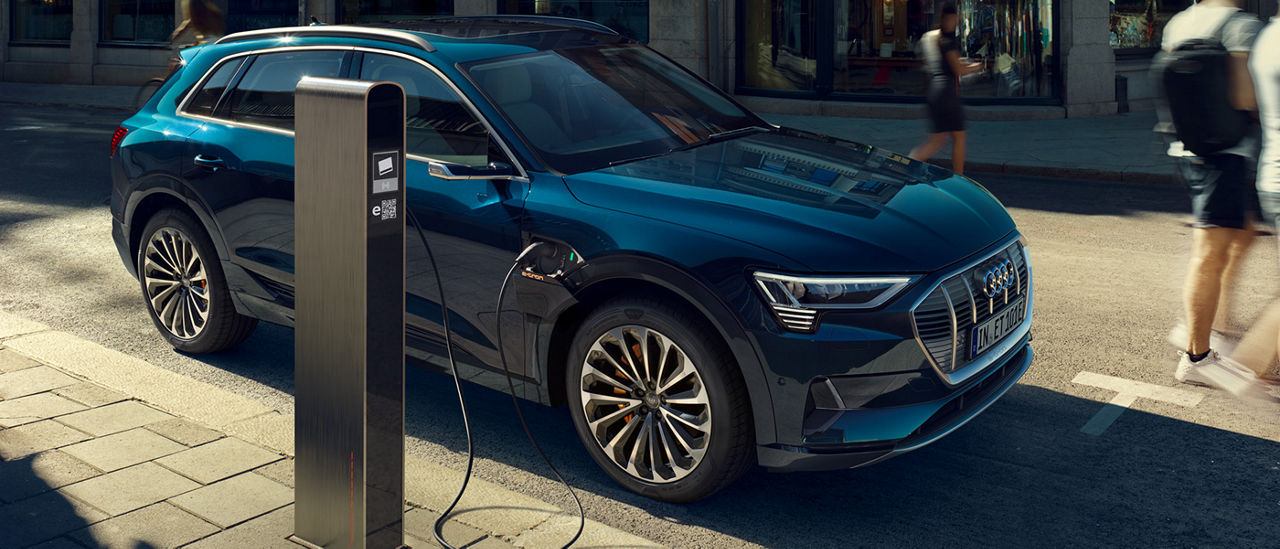
Mode-3 charging cable
¹ Access and network: The Audi Charging Service can only be used by Audi customers (it requires a vehicle identification number). Europe-wide access: The Audi Charging Service is available in 27 European countries with further countries being planned. Prices of the Audi Charging Service are country-specific. The number of charging points provided is country-specific and depends on the degree of development of the available infrastructure. There is no claim to be able to access a charging point everywhere in a country. Audi AG does not guarantee the operation and availability of the charging infrastructure. The location information about the number of charging points is updated regularly, there being no claim to completeness. The Audi Charging Card can only be used in the entire network 24 hours after card activation. Within the first 24 hours, the card can be used if necessary with local restrictions. Authentication via myAudi App (QR code on the charging point) requires an active radio and Internet connection. This authentication method is not available at all charging points.
² Requires registration of a main user contract with myAudi, as well as a main user nomination in the MMI vehicle. The verification and registration as main user ensures that you can use the vehicle control feature (for example, locking and unlocking the vehicle via app). Nominating the main user in the MMI vehicle, i.e. the link between your myAudi account and your Audi, is required in order to set the departure time in the app and transmit it to your Audi.
³ The charging capacity depends on the type of mains connection plug used, country-specific voltage, number of available phases of the power grid, and the customer-specific house installation. It can therefore be reduced on an individual basis. The power supply cable with an industrial plug and the operating unit of the charging system are matched to each other and allow a certain charging capacity. Changing the power supply cable later to another industrial plug is technically possible, but this may lead to a lower charging performance.

